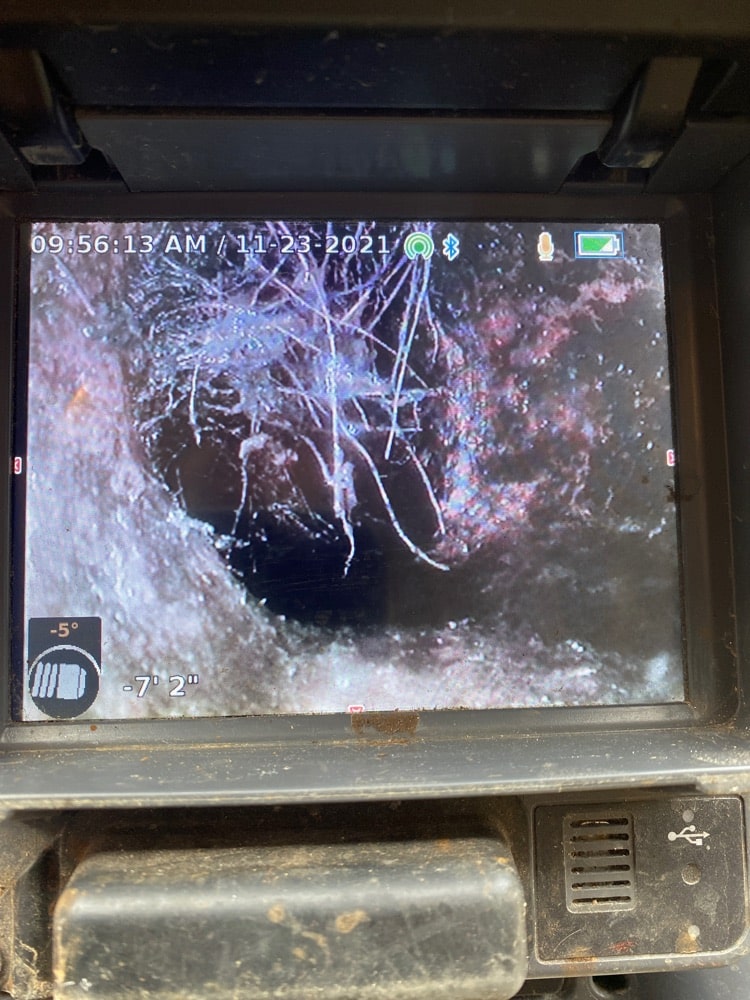
Your home’s main sewer line is its most important plumbing component, but it’s also the most mysterious. It works silently underground to carry all of your home’s wastewater safely away from your property. When a problem develops in this line, it can be impossible to know the exact cause or location. Is it a simple clog? Are invasive tree roots to blame? Is the pipe cracked or collapsed? In the past, diagnosing these problems often involved guesswork or even destructive excavation. Today, modern technology provides a clear window into this hidden world: the sewer line video camera inspection. This powerful diagnostic tool allows a professional plumber to see the exact condition of the inside of your pipes, eliminating guesswork and enabling precise, effective repairs.
How a Sewer Camera Inspection Works
The process is straightforward but technologically advanced. A professionally trained plumbing technician will access your sewer line through a cleanout port, which is a capped pipe designed for this purpose. They will then insert a flexible fiber-optic cable into the pipe. At the tip of this cable is a small, high-resolution, waterproof video camera with its own powerful LED light.
The technician skillfully guides the camera through the twists and turns of your sewer pipe, navigating its entire length from your house to the main sewer connection under the street. As the camera moves through the pipe, it transmits a live video feed to a monitor, allowing both you and the technician to watch the journey and see exactly what’s going on inside your pipes in real-time. A professional can record this footage for your records and can use a locating device to pinpoint the precise surface location and depth of any problems they find.
What Can a Camera Inspection Uncover?
A video inspection can identify a wide range of common and serious sewer line problems with 100% accuracy.
- Tree Root Intrusion: The camera can clearly show the dense, web-like mass of tree roots that have infiltrated the pipe through tiny cracks or joints.
- Cracked, Broken, or Collapsed Pipes: The high-resolution video can identify any structural damage to the pipe, whether it’s a small crack, a fracture from shifting soil, or a completely collapsed section that is obstructing flow.
- Pipe “Bellies” or Sags: Over time, sections of the pipe can sink into the soil, creating a low spot or “belly.” This area collects solid waste and water, leading to frequent and recurring clogs. The camera can clearly identify these sags.
- Serious Blockages: The inspection can reveal the exact nature of a clog, whether it’s a buildup of grease and sludge, a solid foreign object, or something else entirely.
- Pipe Material and Condition: It allows the plumber to see what kind of pipes you have (e.g., older clay, cast iron, or modern PVC) and assess their general condition, helping to determine their remaining lifespan.
When Should You Get a Camera Inspection?
As a diagnostic tool, a camera inspection is invaluable. It’s highly recommended if:
- You are buying a new home. Before you finalize the purchase, an inspection can uncover pre-existing sewer problems that could save you thousands in unexpected repair costs. Home inspection associations like the American Society of Home Inspectors (ASHI) often recommend a sewer scope as a crucial part of due diligence.
- You are experiencing recurring drain backups. If you have to call a plumber every few months to clear the same clog, a camera inspection can identify the underlying cause, like roots or a belly, that a simple drain snake won’t fix.
- You have an older home. If your home is several decades old, an inspection can assess the condition of your original sewer lines before a major failure occurs.
Your San Diego Experts for Camera Inspections
Don’t guess what’s going on in your sewer line. Get a clear and accurate diagnosis with a professional video inspection. For homeowners and property buyers in San Diego, the experienced team at Happy Plumbing offers state-of-the-art camera inspections. Contact us today to see the truth about your pipes.
